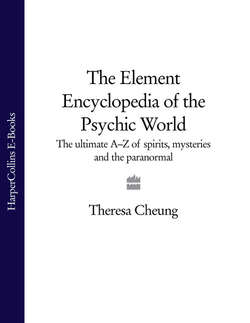Читать книгу The Element Encyclopedia of the Psychic World: The Ultimate A–Z of Spirits, Mysteries and the Paranormal - Theresa Cheung, Theresa Cheung - Страница 128
BORLEY RECTORY
ОглавлениеBorley Rectory has been called ‘the most haunted house in England’. It was investigated between 1929 and 1938 by Harry Price, founder of the National Laboratory of Psychical Research in London. Price, a celebrated ghost hunter, claimed the house to be ‘the best authenticated case in the annals of psychical research’.
The rectory, a gloomy and unattractive red building located in the county of Essex, was built in 1863 by the Reverend Henry Dawson Ellis Bull. He later expanded the original building to accommodate his large family of 14 children.
The first reported ghostly incident occurred in the afternoon of 28 July 1900, when one of the Reverend’s daughters, Ethel, thought she saw a ghost that looked like a nun dressed in dark clothes. Local legend had it that the rectory was built on the site of a thirteenth-century monastery, where a monk and a nun had fallen in love but had been killed before eloping. Sightings of the nun’s ghost, and the ghost of a dark man wearing a tall hat, were reported frequently by Ethel Bull and her sisters. Ethel lived a long life, dying at the age of 93 in 1963. She maintained her story until the end, saying, What would be the use of an old lady like me waiting to meet her Maker, telling a lot of fairy stories?’
In 1929 Harry Price invited himself to the rectory to investigate. According to his book, The Most Haunted House in England, published in 1940, the occupants at the time, the Reverend G E Smith and his wife, both professed sceptics of the paranormal, told him that strange occurrences began almost immediately after they moved in. They heard strange whispers, saw odd black shapes and magic lights, heard phantom footsteps, smelled strange odours and, in general, witnessed odd occurrences such as objects smashed, doors banged, spontaneous combustions of portions of the house, wall writings, paranormal bell ringing, the sounds of galloping horses, mysterious smoke in the garden, rapping in response to questions and appearances by the phantom nun. Price said he investigated the matter thoroughly and actually witnessed the phenomena for himself while he was there. He held a séance, and he and others present heard a faint tapping in response to questions. The spirit claimed to be the Reverend Bull.
In 1929 the Smiths moved out and the Reverend Lionel Algeron Foyster and his wife, Marianne, moved in. The poltergeist activity increased, and Price returned to continue his investigations. He found the phenomena to be much more violent than before, terrifying Marianne and their three-year-old daughter in particular. In 1935 the Foysters moved out, and in 1937 Price leased the property himself for a year. During his stay he witnessed many paranormal incidents and compiled a book of procedures using camera equipment and other methods of documenting spirit activity. He enrolled 40 assistants to help him.
Many of his assistants were mediums, and they produced some fabulous theories, suggesting that the monk and nun were strangled and buried in the garden and that they longed for mass and a proper burial. Other assistants began the project with great enthusiasm but dropped out after getting no results.
Price left the rectory in 1938, convinced that paranormal activity was taking place and that there was a medieval monastery on the site, even though it had already been proved that the only building ever to have existed on that site was a twelfth-century church, not a monastery. His book publishing his findings was well received for its meticulous psychical research but also criticized for being sensational. After Price’s death in 1948 his allegations were reexamined by psychical researchers Trevor Hall, Kathleen Goldney and Eric Dingwell. Charles Sutton, a Daily Mail reporter, suspected Price of faking phenomena. During a visit to the rectory with Price he had been hit on the head by a pebble - and subsequently found Price’s pockets to be full of pebbles.
Perhaps the most damming condemnation, however, came from a previous inhabitant of the rectory, Mrs Smith, who in 1949 signed a statement saying that nothing unusual had happened in the house until Price arrived. The Smiths suspected him of being the perpetrator.
Hall, Dingwell and Goldney, in their book The Haunting of Borley Rectory, concluded that nothing out of the ordinary had happened there during Price’s stay and that everything could be explained rationally. They accused Price of concocting hocus-pocus to serve his own need for publicity. They suggested that Borley Rectory lent itself well to the influence of suggestion, since ‘In every ordinary house sounds are heard and trivial incidents occur which are unexplained or treated as of no importance. But once the suggestion of the abnormal is put forward - and tentatively accepted - then these incidents become imbued with sinister significance: in fact they become part of the haunt.’
Borley Rectory is an old, gloomy-looking building, and a psychological explanation is plausible. However, it may not explain everything, and the possibility that something paranormal did occur or that certain individuals who lived there, including Price himself, were sympathetic and sensitive enough to become a focus of psychic attack cannot be dismissed totally.
